Perspectives: Dustin Torkay, Archer – On the fast track, setting technological goals within reach
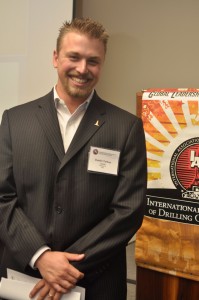
By Joanne Liou, editorial coordinator
In the race to the finish line, it was the hands-on experience that stuck with Dustin Torkay, project engineer at Archer. A life-long hobby working on cars turned into a competitive project through college and introduced Mr Torkay to race tracks around the world, while positioning him to become a budding leader on another track in the oil and gas field.
At 27, Mr Torkay is taking the fast route in the drilling industry. “In terms of age, yes, I’m a young engineer,” he acknowledged, “but experience is not just how many years you’ve been doing something. There’s what you do with your time.”
A graduate of California State Polytechnic University, Pomona, Mr Torkay earned a Bachelor of Science in mechanical engineering in 2007. Through college, he was heavily involved in Formula SAE, a student design competition to develop a Formula-style race car, which he credits for experience that he continues to apply to his job today. “I think I use more of my experiences from Formula SAE – trying to look at a situation and developing priorities of what to do when. It’s not hardcore engineering; it’s mostly common sense,” Mr Torkay explained.
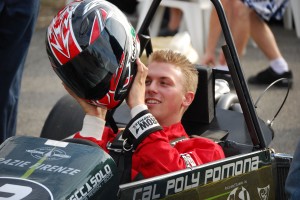
Before Mr Torkay entered the drilling industry, he raced at California Speedway and on the Ferrari race track in Fiorano, Italy, with his Formula SAE team. “The stereotype for young engineers is inexperienced, and you design stuff or put things together that aren’t practical or can’t be made easily and is overly complicated,” he said. That program helped him to avoid those pitfalls. As the team leader, Mr Torkay saw the project from conception of the car design to the fundraising and manufacturing phases to the finish line. “It definitely has affected who I am and my career,” he said.
Fresh out of college in 2007, Mr Torkay joined National Oilwell Varco (NOV) in Orange, Calif., where he worked on developing top drives and other rig equipment. In 2009, Mr Torkay took on his biggest project of his career so far – managing the installation of an NOV top drive about 200 miles offshore on a semi in the Gulf of Mexico. “I knew the equipment. I made that my business,” Mr Torkay stated. The project was the first offshore installation of NOV’s TDX-1250 top drive. Leading a crew of about 50 people, Mr Torkay worked within a 21-day window to supervise the high-profile installation, from the initial surveys and engineering to project planning and meeting target dates.
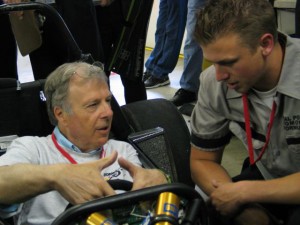
Mr Torkay described the project as “fun” despite getting only a few hours of sleep per night while working with the weight of the project on his shoulders. “I kept inheriting more and more project scope,’” Mr Torkay explained. “By the time it came around, I was leading and running the installation.”
After working with Seawell, now part of Archer, on the top drive project, Mr Torkay joined Archer and departed from the clout and resources of NOV to become a jack-of-all-trades project engineer. “One of the things I initially missed was, at NOV, it’s such a big company with so many resources, so many people to go to and suck information from, and over here, all of a sudden, at two and a half years in the industry, people were coming to me for answers.” To reconnect with others in the industry, he got involved with IADC.
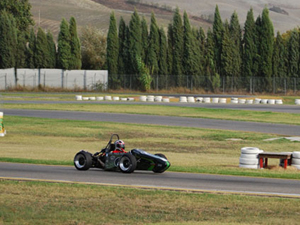
Mr Torkay had initially turned down appeals to lead an IADC Advanced Rig Technology (ART) subcommittee before he agreed to step up as vice chairman of the Future Technology Subcommittee. “I didn’t want to step into something and then completely blunder it,” he said, “but you just step in and step up.” At the 2011 IADC ART Conference in September in Houston, he noted that only a few people thought the industry was successfully facilitating technology adoption. “We’re definitely behind the curve,” Mr Torkay admitted. “There are always bright spots, but overall we’re slow to adopt. I think largely that’s the culture, and also there are significant challenges with some conflicting business models and the way our industry is set up.” With the influence of the subcommittee, Mr Torkay hopes to facilitate progress – “getting the right parties together, trying to ask the right questions, filling in the gaps,” he said.
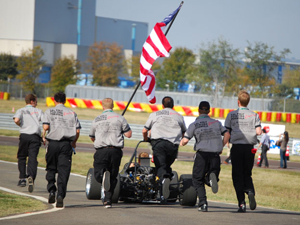
Further, he is steering the subcommittee to focus on the near-term technology commercialization opportunities. “Next year, in addition to our mini-workshops (looking from the present to a two-year time horizon), we’re looking at hosting a ‘Drilling in the Past, Present & Future Conference’ (five to 15-year time horizon) that will focus on future industry challenges using lessons from the past and understanding exactly where our industry is at today and where the pains are,” he said. Mr Torkay hopes to make next year’s conference a featured technology conference/workshop, with condition monitoring being one area of focus.
“Dustin has taken the bull by the horns in the IADC Advanced Rig Technology subcommittee,” Mike Killalea, IADC group vice president and publisher, said. “Through his leadership, we’ve held workshops on stick-slip mitigation and shale gas that have gained attention and resulted in industry papers. Dustin is really setting a new model for committee leadership, and I expect he is going to go far in the industry.”
Click below to see Mr Torkay and the California State Polytechnic University, Pomona team compete in Fiorano, Italy at Ferrari’s track in 2007.


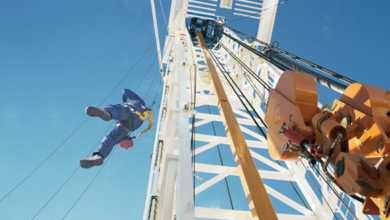
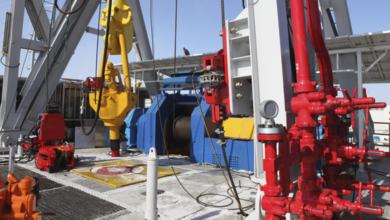
Dustin. That is excellant ! A job well done. Rich and Pam are real proud of you !
Congratulations Dustin, you have always had amazing drive, common sense, and ingenuity. I am proud of you!